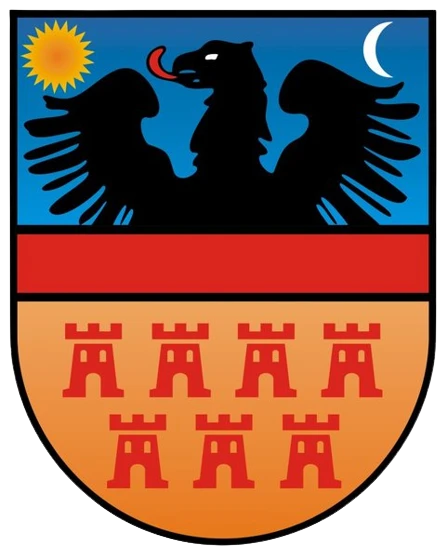Sighișoara (german: Schäßburg, hungarian: Segesvár) is a town in Mureș County in the heart of Transylvania, in the center of Romania. The city has a long history dating back to the 12th century and is known for its well-preserved medieval architecture. It was built on a hill and is surrounded by a fortified wall ring that still stands today.
Sighisoara was founded in the 12th century by German settlers and has experienced many cultural influences throughout its history. Among them Hungarian, Saxon and Romanian influences. It was an important trading center and a strategically important fortress during the medieval wars and conflicts in the region.
The historic citadel of Sighisoara originally had 14 towers, of which 9 remain today. Some of them bear the names of the guilds that maintained or used them. Here is a complete list of the most important craft towers:
Towers of the craft guilds in Sighișoara
Clock Tower (Turnul cu Ceas) – Landmark, 64 m (approx. 210 ft) high, now a museum.
Tailors’ Tower (Turnul Croitorilor) – imposing gate tower, southern entrance.
Shoemakers’ Tower (Turnul Cizmarilor) – on the north side, reconstructed after 1676.
Tinsmiths’ Tower (Turnul Cositorarilor) – Striking, with several basic shapes, 25 m (82 ft) high.
Butchers’ Tower (Turnul Măcelarilor) – Hexagonal defense tower.
Furriers’ Tower (Turnul Cojocarilor) – small, four-story tower.
Ropemakers’ Tower (Turnul Frânghierilor) – also served as the residence of the cemetery caretaker.
Ironsmiths’ Tower (Turnul Fierarilor) – Built in 1631 on the foundations of the Barbier Tower.
Tanners’ Tower (Turnul Tăbăcarilor) – one of the oldest towers, with an arched gallery leading to the Tinsmiths’ Tower.
No longer preserved: Goldsmith Tower, Weaver Tower, Fisherman Tower.
Other places of interest in Sighișoara
Church on the Hill (Biserica din Deal) – gotische Hallenkirche, über 176 Stufen erreichbar.
Monastery Church (Biserica Mănăstirii) – Former Dominican church, near the Clock Tower.
Birthplace of Vlad Țepeș (Casa Vlad Dracul) – now a restaurant/museum, in the center of the citadel.
Historic staircase (Schoolchildren's Staircase / Scara școlarilor) – Covered wooden staircase with 176 steps leading to the Church on the Hill.
Castle square (Piața Cetății) – Ensemble of colorful town houses from the Gothic/Renaissance/Baroque periods.
Castle walls & bastions – partially accessible, with views over the lower town and the Târnava Valley.
Cemetery at the Church on the Hill – impressive graves of the Transylvanian Saxons with ancient inscriptions.
Sighisoara's most famous sights include the city center, which was declared a UNESCO World Heritage Site in 1999, and the church on the hill (also known as the Mountain Church). The city is also an important place for Orthodox Christianity and is home to the Sighisoara Monastery.
It also houses the birthplace of the famous Vlad Drăculea, better known as Dracula. The house is now a small museum that highlights the legend of Dracula and the historical significance of the region.
Besides its rich history and architecture, Sighisoara is also known for its vibrant art scene and festivals. For example, the "Medieval Festival", which takes place every summer. +
The city has a variety of cozy restaurants, cafés, and traditional inns where visitors can sample the local cuisine. Traditional dishes such as Sarmale (cabbage rolls) and Mămăligă (polenta) are particularly popular here.
Conclusion:
Sighisoara is essentially a medieval guild town, whose citadel with nine craft towers, mountain church, clock tower, and historic alleys is practically an open-air museum.
...the landscape:
The town is surrounded by a picturesque landscape, which offers hiking trails, green hills and forests. The surrounding area is ideal for nature lovers and adventure seekers who like to explore the surrounding nature.
Sighisoara is a place where history, culture and natural beauty meet. With its rich history, picturesque old town and unique atmosphere, Sighisoara is a fascinating destination that delights visitors from all over the world.
Also interesting:
Sighișoara is located at latitude 45,93° N. Here is a selection of western cities that are close to the city's latitude:
🇫🇷 France
Lyon – approx. 45,76° N (very close to Sighișoara)
🇮🇹 Italy
Milan – approx. 45,47° N
🇺🇸 United States
Portland (Oregon) – approx. 45,52° N
🇨🇦 Canada
Montreal (Québec) – approx. 45,50° N
Differences of 0.5° correspond to approximately 55 km (34 mi) as the crow flies.
Photo album of Sighișoara
Information about MagentaCloud from German Telekom.
MagentaCLOUD only uses servers in Germany to store my photo albums. This data is therefore subject to the EU's General Data Protection Regulation (GDPR) and the German Federal Data Protection Act (BDSG-new) - the strictest data protection in the world.



















